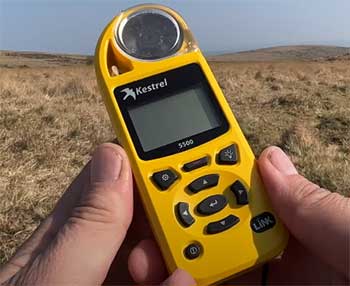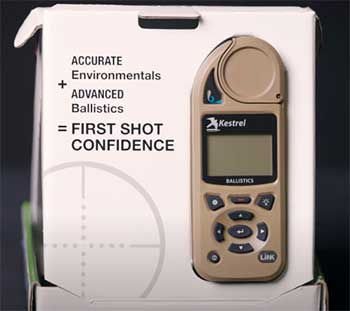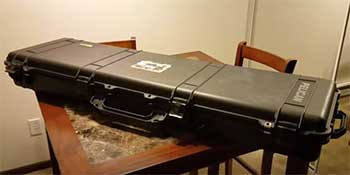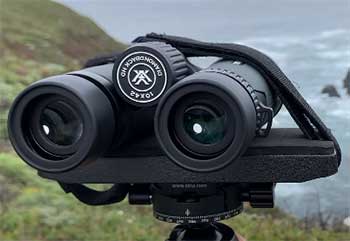There’s no denying that Kestrel devices have significantly transformed the world of long-range shooting and meteorology. With cutting-edge technologies incorporated into their handheld devices, they’ve set a high standard for competitors.
In this article, we’ll dive into the Kestrel 5500 and 5700 ballistic meters, showcasing their key features, pros, cons, and answering a few FAQs about these devices.
A Brief Comparison Table
| Feature | Kestrel 5500 | Kestrel 5700 |
| Weather Tracking | Yes | Yes |
| Ballistic Calculator | No | Yes |
| Bluetooth Connectivity | No | Yes |
| Storage for Gun and Bullet Profiles | No | Yes |
| Backlit Screen | Yes | Yes |
| Digital Compass | Yes | Yes |
| Cost | Lower | Higher |
Kestrel 5500: Overview and Key Features

The Kestrel 5500 Weather Meter is an all-in-one device designed for a wide range of applications, from outdoor sports to professional meteorology.
Its diverse range of sensors measures parameters like temperature, humidity, pressure, wind speed, and direction.
Moreover, it’s equipped with a digital compass and a backlight for easy reading in low-light conditions.
The standout feature of the Kestrel 5500 is its comprehensive environmental data logging.
Users can track changes in the weather, a critical advantage for outdoor enthusiasts, drone pilots, and professionals needing accurate on-site weather data.
- Pros and Cons of the Kestrel 5500
The Kestrel 5500 is well-liked for its compact, rugged design, making it perfect for outdoor use. Its data logging capabilities and range of measurements also make it a versatile tool for various applications.
However, the 5500’s lack of integrated ballistics may disappoint some shooters. While it provides vital environmental data for long-range shooting, users would need to manually input the information into a separate ballistic calculator.
Kestrel 5700: Overview and Key Features
The Kestrel 5700 Ballistics Weather Meter takes everything good about the 5500 and kicks it up a notch. This model includes all the weather tracking features of its predecessor, plus an integrated Applied Ballistics calculator.
The Kestrel 5700 is a top-tier choice for long-range shooters, providing a detailed ballistic solution considering factors like bullet characteristics, distance, wind, and atmospheric conditions. It even comes with a Bluetooth feature for data transfer to your smartphone or other devices.
- Pros and Cons of the Kestrel 5700

The Kestrel 5700’s biggest selling point is undoubtedly its built-in ballistics calculator.
It allows shooters to quickly adjust for various environmental conditions and ensures more accurate shots at long ranges.
Its Bluetooth connectivity is also a nice touch, allowing for seamless integration with other devices.
However, the 5700 comes at a higher cost than the 5500, which might put off some potential buyers.
Furthermore, the abundance of features can make the device seem a bit overwhelming for novices.
Key Differences Between Kestrel 5500 and 5700
While the Kestrel 5500 and 5700 share similarities like weather tracking capabilities, their distinctions lie in features related to ballistics. Let’s dissect these differences to help you make a more informed purchase decision.
- Ballistic Calculator
The primary difference between the Kestrel 5500 and the 5700 lies in the ballistic calculator. The 5500, though an excellent weather meter, lacks any ballistic computing capabilities.
It means that while it provides relevant data for long-range shooting, users would need to use a separate device or software to make ballistic calculations.
On the other hand, the Kestrel 5700 comes equipped with an integrated Applied Ballistics calculator. It gives users real-time firing solutions based on atmospheric conditions, bullet characteristics, and distance to the target.
This feature makes the 5700 a game-changer for long-range shooters who require fast, accurate ballistic data in the field.
- Data Transfer
When it comes to data transfer, the Kestrel 5700 has a significant advantage. This model includes Bluetooth connectivity, a feature absent in the 5500. The Bluetooth allows you to wirelessly connect your 5700 to smartphones and other devices, providing a seamless data transfer experience.
With the help of Kestrel’s companion app, users can input their firearm and bullet data more conveniently, view and share real-time shooting solutions, and even manage the device’s settings.
This capability is particularly useful for shooters who want to maintain a digital log of their shooting sessions or share their data with others.
- Gun and Bullet Profiles
The Kestrel 5700’s ballistic calculator allows users to store multiple firearm and bullet profiles. This feature is beneficial for those who regularly switch between different firearms or ammunition types.
Once you input the data, the 5700 can remember it and use it to provide accurate ballistic solutions.
The Kestrel 5500, lacking a ballistic calculator, does not have this feature. As such, users who want to keep a record of their different gun and bullet data would need to do so manually or use a separate device or software.
- Cost
Given its advanced features, the Kestrel 5700 comes with a higher price tag compared to the 5500. This cost may not be an issue for professional shooters or serious hobbyists who can leverage the 5700’s advanced capabilities.
However, for users who only need a robust weather meter without the ballistic features, the 5500 could be a more cost-effective option.
Also Read: Differences Between Kestrel 2700 And 5700 Ballistic Meters.
Frequently Asked Questions (FAQ)
The Kestrel 5700 provides comprehensive real-time weather tracking and a sophisticated integrated ballistic calculator for long-range shooters. It measures a host of environmental variables, calculates bullet trajectory based on these conditions, and suggests adjustments for a more accurate shot.
The Kestrel 5500 is a pocket-sized weather station that measures and logs numerous environmental parameters, including temperature, humidity, wind speed, and direction. It’s ideal for anyone needing on-the-spot accurate weather data, although it lacks the integrated ballistic calculator found in the 5700.
Yes, the Kestrel 5700 features an integrated Applied Ballistics calculator that can generate precise firing solutions in real-time based on the current environmental conditions and bullet characteristics.
Several models of Kestrel meters feature Applied Ballistics, including the 5700 Elite, the 5700 with LiNK, and the Kestrel Ballistics Weather Meter.
Final Thoughts
Whether you should opt for the Kestrel 5500 or the 5700 depends largely on your specific needs. If you require a portable and robust weather station with comprehensive data logging capabilities, the 5500 is a fantastic option.
However, if you’re a long-range shooter needing an integrated ballistics calculator for real-time firing solutions, the Kestrel 5700 will be your ideal partner in the field.
Despite the higher cost, its advanced features and capabilities can make all the difference in your shooting accuracy.

